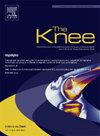Bone–patellar tendon–bone allografts are safe and effective grafts for anterior cruciate ligament one-stage revision: A consecutive series of 38 patients with at least 2 years of follow up
IF 2
4区 医学
Q3 ORTHOPEDICS
引用次数: 0
Abstract
Background
Rupture of the anterior cruciate ligament is one of the most common injuries in sports. Although primary reconstruction is a successful procedure, failure is reported to occur in up to 13% of patients. In patients who complain of instability, revision surgery should be proposed and discussed with patients. The issue arising in this setting is the graft choice, being limited from the grafts used in primary surgery.
Methods
We retrospectively enrolled 38 consecutive patients who had undergone ACL one-stage revision with bone–patellar tendon–bone (BPTB) allografts from a single center with at least 2 years of follow up. The clinical evaluation was based on PROMs In addition, we recorded the rate of allograft re-rupture and post-surgical complications.
Results
Our series showed good PROMs at a minimum of 2 years follow up. Median IKDC, Lysholm, and Simple Knee Value were 82.8, 85.5, and 77.5, respectively. For the Tegner Activity Scale we recorded a median value of 8.0 before injury and 6.0 after surgery. Timing for return-to-play was between 6 and 9 months for 19 patients (54.3%). Regarding post-surgery complications, we recorded an overall rate of 15.79%, with however minor entity (Clavien–Dindo grade I). Allografts re-rupture rate was 10.5%.
Conclusion
BPTB allografts in one-stage ACL revision enabled patients to return to sports and to a good quality of life after the final follow up. Moreover, this type of graft has been shown to be a safe choice, being burdened by a low rate of post-surgical complications and re-rupture risk.
骨-髌腱-骨异体移植物是安全有效的前交叉韧带一期翻修移植物:连续38例患者,至少2年随访
背景:前交叉韧带断裂是运动中最常见的损伤之一。虽然初次重建是成功的手术,但据报道,高达13%的患者会出现失败。对于抱怨不稳定的患者,应提出翻修手术并与患者讨论。在这种情况下出现的问题是移植物的选择,受限于初级手术中使用的移植物。方法回顾性招募38例连续接受前交叉韧带一期骨-髌腱-骨(BPTB)同种异体移植的患者,随访至少2年。临床评价以PROMs为基础,并记录同种异体移植物再破裂率和术后并发症。结果随访至少2年,患者均表现出良好的PROMs。中位IKDC、Lysholm和单纯膝关节值分别为82.8、85.5和77.5。对于Tegner活动量表,我们记录的中位值为损伤前8.0,手术后6.0。19例患者(54.3%)恢复比赛的时间在6 - 9个月之间。关于术后并发症,我们记录到的总发生率为15.79%,但存在较小的并发症(Clavien-Dindo I级)。同种异体移植物再破裂率为10.5%。结论bptb同种异体移植一期前交叉韧带修复术后患者恢复运动,术后随访生活质量良好。此外,这种类型的移植物已被证明是一种安全的选择,其术后并发症发生率低,再破裂风险低。
本文章由计算机程序翻译,如有差异,请以英文原文为准。
求助全文
约1分钟内获得全文
求助全文
来源期刊

Knee
医学-外科
CiteScore
3.80
自引率
5.30%
发文量
171
审稿时长
6 months
期刊介绍:
The Knee is an international journal publishing studies on the clinical treatment and fundamental biomechanical characteristics of this joint. The aim of the journal is to provide a vehicle relevant to surgeons, biomedical engineers, imaging specialists, materials scientists, rehabilitation personnel and all those with an interest in the knee.
The topics covered include, but are not limited to:
• Anatomy, physiology, morphology and biochemistry;
• Biomechanical studies;
• Advances in the development of prosthetic, orthotic and augmentation devices;
• Imaging and diagnostic techniques;
• Pathology;
• Trauma;
• Surgery;
• Rehabilitation.
 求助内容:
求助内容: 应助结果提醒方式:
应助结果提醒方式:


